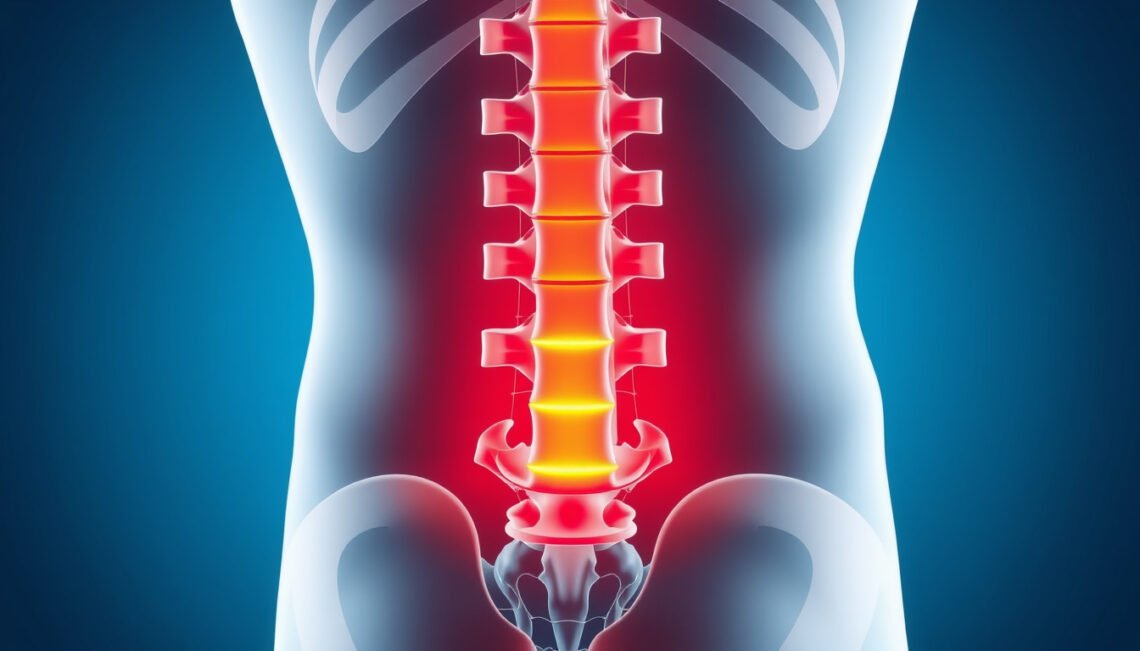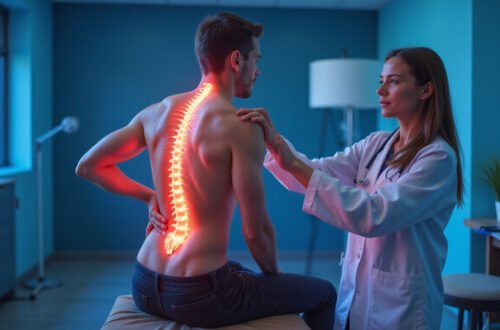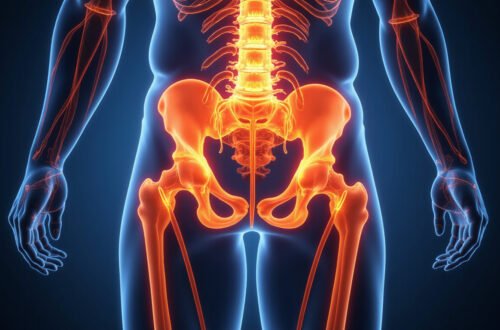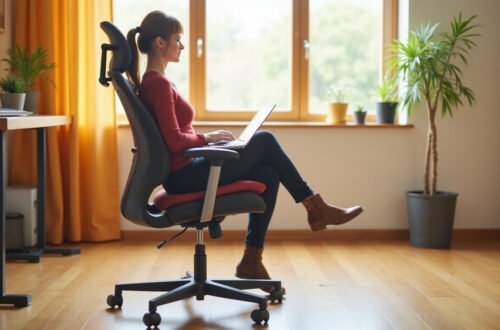Lumbar stenosis is a condition that increasingly affects the aging population, causing significant discomfort and mobility issues. If you or a loved one are experiencing symptoms like lower back pain or leg weakness, understanding lumbar stenosis is essential for seeking appropriate treatment. In this article, we will explore what lumbar stenosis is, its causes, common symptoms, and available treatment options, helping you navigate this condition with clarity and confidence.
What Is Lumbar Stenosis?
Lumbar stenosis refers to the narrowing of the spinal canal in the lower back (lumbar spine). This narrowing puts pressure on the spinal cord and nerves, leading to a range of neurological symptoms. It primarily affects individuals over the age of 50 but can occur in younger adults due to congenital factors or injury. The term “stenosis” simply means narrowing, and in the case of lumbar stenosis, it impacts the space that contains nerves responsible for leg movement and sensation.
Understanding lumbar stenosis is crucial because it can significantly impair daily activities, such as walking, standing, or even sitting comfortably. Early diagnosis and management can improve quality of life substantially.
Causes of Lumbar Stenosis
The development of lumbar stenosis is often a result of degenerative changes that occur naturally with age. However, other factors can contribute to the condition:
Degenerative Disc Disease
As discs between vertebrae age, they lose water content and elasticity, leading to disc degeneration. This process can cause the vertebrae to move closer together, reducing the space available for nerves.
Bone Spurs (Osteophytes)
Over time, the body may develop bone spurs as a response to disc degeneration or arthritis. These bony projections can protrude into the spinal canal, narrowing the space.
Ligament Hypertrophy
The ligaments that support the spine may thicken or hypertrophy over time, further reducing the space within the spinal canal.
Congenital Factors
Some individuals are born with a naturally narrow spinal canal, making them more susceptible to symptoms even with minor degenerative changes.
Spinal Injuries or Fractures
Trauma or injury to the spine can lead to fractures or dislocation, indirectly causing narrowing of the spinal canal.
Other Conditions
Conditions such as rheumatoid arthritis or tumors can also contribute to lumbar stenosis by causing abnormal growths or swelling.
Recognizing Symptoms of Lumbar Stenosis
Symptoms of lumbar stenosis often develop gradually and can vary depending on the severity of narrowing and nerve compression. Common signs include:
1. Lower Back Pain
Persistent, dull lower back pain is a frequent complaint, often worsening with activity.
2. Leg Pain and Numbness
Patients frequently experience numbness, tingling, or weakness in one or both legs, especially after walking or standing for extended periods.
3. Neurogenic Claudication
This classic symptom involves leg pain, weakness, or numbness that worsens with walking or standing and improves with sitting or bending forward. It’s often described as a cramping sensation.
4. Balance and Coordination Issues
In severe cases, nerve compression affects balance and coordination, increasing the risk of falls.
5. Bowel or Bladder Dysfunction
Although less common, severe nerve compression can impair bowel or bladder control, constituting a surgical emergency.
Diagnosing Lumbar Stenosis
Diagnosis typically involves a combination of clinical evaluation and imaging studies:
- Physical Examination: assesses gait, reflexes, muscle strength, and nerve function.
- Imaging Tests:
- MRI (Magnetic Resonance Imaging): provides detailed images of soft tissues, discs, and nerve roots.
- CT Scan: useful for visualizing bony structures.
- X-rays: can reveal degenerative changes but are less detailed.
An accurate diagnosis is vital to determine the best course of action.
Treatment Options for Lumbar Stenosis
Treatment approaches for lumbar stenosis range from conservative management to surgical interventions, depending on symptom severity and impact on daily life.
Conservative Treatments
Most patients initially benefit from non-invasive therapies:
- Physical Therapy: tailored exercises can strengthen back muscles and improve flexibility.
- Medications: NSAIDs (e.g., ibuprofen), acetaminophen, or muscle relaxants can relieve pain.
- Epidural Steroid Injections: reduce inflammation and provide temporary relief.
- Lifestyle Modifications: weight loss, activity adjustments, and ergonomic improvements.
Surgical Options
When conservative treatments fail to provide relief, or if symptoms progress to disability, surgery may be recommended:
- Laminectomy: removal of the lamina (part of the vertebra) to decompress nerves.
- Laminotomy: partial removal of lamina to relieve pressure.
- Spinal Fusion: stabilizes the spine when instability exists.
- Decompression with Instrumentation: involves hardware to maintain spinal stability.
Surgical outcomes are generally favorable, with many patients experiencing significant symptom relief.
Managing Lumbar Stenosis Long-term
Post-treatment management may include ongoing physical therapy, activity modifications, and regular follow-up appointments. Maintaining a healthy weight and core strength can also prevent further degenerative changes.
Why Seek Medical Care for Lumbar Stenosis?
Ignoring symptoms of lumbar stenosis can lead to worsening nerve compression and potentially permanent nerve damage. Early diagnosis and comprehensive management improve prognosis and preserve mobility.
External Resources for Further Information
For more in-depth knowledge about spinal conditions, including lumbar stenosis, the National Institute of Neurological Disorders and Stroke (NINDS) provides valuable resources and research updates (source).
Summary: Key Takeaways About Lumbar Stenosis
- Lumbar stenosis is a narrowing of the spinal canal in the lower back that impinges on nerves.
- Causes include age-related degeneration, bone spurs, ligament thickening, congenital factors, and injury.
- Common symptoms include lower back pain, leg numbness, neurogenic claudication, and balance issues.
- Diagnosis involves clinical examination and imaging, primarily MRI.
- Treatment options range from conservative therapies like physical therapy and medications to surgical decompression.
- Prompt medical attention can significantly improve quality of life and prevent serious complications.
FAQs About Lumbar Stenosis
Q1: What are the early signs of lumbar stenosis?
A: Early signs often include intermittent leg numbness or tingling, mild lower back discomfort, and difficulty walking long distances. Noticing these symptoms and consulting a healthcare provider can lead to early intervention.
Q2: Can lumbar stenosis be prevented?
A: While age-related degenerative changes are inevitable, maintaining a healthy weight, staying active, and practicing good posture can reduce stress on the lumbar spine and help prevent or delay symptoms.
Q3: Is surgery always necessary for lumbar stenosis?
A: No. Many patients find relief through conservative treatments. Surgery is typically considered when symptoms severely impact daily activities or do not respond to non-invasive methods.
Take Control of Your Spine Health Today
If you’re experiencing symptoms suggestive of lumbar stenosis, don’t wait—early evaluation and treatment can make a substantial difference. Consult with a healthcare professional specializing in spinal disorders to develop a personalized management plan. Remember, understanding your condition is the first step toward restoring mobility and improving your quality of life.

Your spine is vital to your daily function; addressing lumbar stenosis proactively ensures you stay active and pain-free for years to come.






